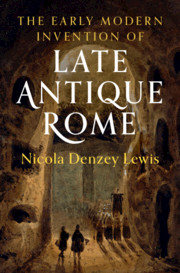Book contents
- The Early Modern Invention of Late Antique Rome
- The Early Modern Invention of Late Antique Rome
- Copyright page
- Dedication
- Contents
- Illustrations and Maps
- Acknowledgments
- Abbreviations
- Introduction
- 1. The Reinventio of the Hidden City
- 2. Rewiring the Sacred Circuit (Roma Sancta Renovata)
- 3. Remains to Be Seen (or, On the Holy Corpse)
- 4. Peter’s Bones
- 5. De Rossi’s Deception: Crafting the Crypt of the Popes
- 6. Raising Late Antique Jews from the Valley of Dry Bones
- 7. Disposing of Depositio (Ad Sanctos)
- 8. Inventing Christian Rome
- Bibliography
- Index
3. - Remains to Be Seen (or, On the Holy Corpse)
Published online by Cambridge University Press: 21 August 2020
- The Early Modern Invention of Late Antique Rome
- The Early Modern Invention of Late Antique Rome
- Copyright page
- Dedication
- Contents
- Illustrations and Maps
- Acknowledgments
- Abbreviations
- Introduction
- 1. The Reinventio of the Hidden City
- 2. Rewiring the Sacred Circuit (Roma Sancta Renovata)
- 3. Remains to Be Seen (or, On the Holy Corpse)
- 4. Peter’s Bones
- 5. De Rossi’s Deception: Crafting the Crypt of the Popes
- 6. Raising Late Antique Jews from the Valley of Dry Bones
- 7. Disposing of Depositio (Ad Sanctos)
- 8. Inventing Christian Rome
- Bibliography
- Index
Summary
Was the corpse considered polluted or holy in fourth-century Rome? I argue in Chapter 3 that unlike other fourth-century Christians elsewhere, Roman Christians refrained from fetishizing the corpse as a precious object. Only much later, in the wake of the Reformation, did Catholics come to regard the holy corpse with new fascination and ardent devotion. It was during this era that catacomb discovery and renovation began in earnest. This charnel piety redoubled again in the late nineteenth century, once again driving catacomb exploration and excavation, bringing with it a distinctively corporeal valuation of martyrs.
- Type
- Chapter
- Information
- The Early Modern Invention of Late Antique Rome , pp. 127 - 164Publisher: Cambridge University PressPrint publication year: 2020

